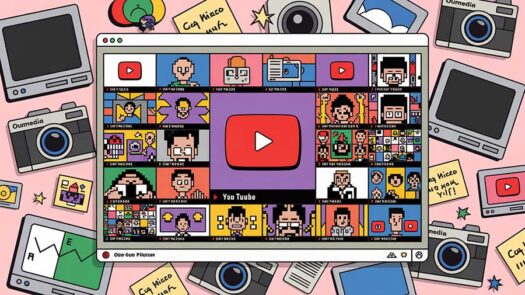The Recording Industry Association of America has discovered that digital radio broadcasts can be copied and redistributed over the Internet.
The horror.
And so the RIAA, the music business’s trade and lobbying group, has asked the Federal Communications Commission to step in and impose an “audio broadcast flag” on certain forms of digital radio.
On April 15, the FCC bowed to the RIAA’s request and initiated a notice of inquiry, typically a step leading to formal rule-making. The public may submit comments to the FCC between June 16 and July 16.
If this sounds familiar, it should. The entertainment industries, unable to get Congress to pass related legislation, did an end-run by lobbying mightily to get the Federal Communications Commission to impose a broadcast flag requirement to protect digital television signals from “indiscriminate retransmission” over the Internet. The FCC, which has been quietly transforming into the Federal Computer Commission, did just that last fall. The new rules for digital TV take effect in July 2005.
Taking a page from Hollywood, the recording industry has begun to push for a similar regime for digital radio, prosing an audio broadcast flag for inclusion in the digital radio transmissions of terrestrial AM and FM stations. The parameters of such a flag, or piece of software code, are still unclear. It would likely prevent users from sending copyrighted radio programs over the Internet. But it could also hamstring other legitimate uses by preventing a digital radio program from leaving the device on which it was recorded.
Where today you can tape anything you want over the free analog radio airwaves, that may not be true tomorrow. Want to record the digital broadcast of Don Imus, Rush Limbaugh, or Terry Gross on your PC and listen to it in your car? Or tape a cool new digital radio station you discovered and play it for friends at a party?
Your device may well tell you: I’m sorry, Dave, I’m afraid I can’t do that.
Digital radio promises to replace the static and hiss of analog AM and FM signals with crackle-free CD-quality sound. The technology will also allow listeners to summon up song titles, artist names, traffic updates, weather forecasts, sports scores, Spanish language translations, and more on high-definition radio receivers. Digital radio receivers went on sale in the United States only in early 2003, and the nascent industry is just beginning to get off the ground. More than 280 radio stations in 100 U.S. markets have begun digital audio broadcasts or are in the process of converting from analog-only broadcasts.
A revealing exchange of letters flew back and forth last month between RIAA president Cary Sherman, in the role of King Canute commanding the sea to recede, and Consumer Electronics Association CEO Gary Shapiro, in the role of bemused observer.
Sherman disclosed the RIAA’s latest prophesy of Internet doom and gloom in an April 14 letter to Shapiro,. Sherman wrote in part:
[W]e are concerned that new devices manufactured by your members will enable radio listeners to become owners and world distributors of a personalized collection of sound recordings. Specifically, our understanding is that the next generation of digital radio receivers would grant the unfettered ability (1) to redistribute recordings widely, whether on the Internet or digital media and (2) to automatically copy and disaggregate from a broadcast particular recordings of the user’s choice, thereby transforming a passive listening experience into a personal music library — in many cases without the user even listening to the original broadcast. These features, especially when combined with inexpensive storage devices, would fundamentally change the character of broadcast radio from a listening service to a distribution and on-demand reproduction system, displacing the sales on which the entire music industry relies. In other words, the recording industry fears a TiVo or ReplayTV for radio.
Among the forward-thinking ideas that Sherman outlined was a “buy button” that consumer electronics makers could add to their devices, giving consumers “the ability to quickly and easily purchase music that they hear on the radio.”
Shapiro all but chortled in his riposte, writing that he was “puzzled” by “your belief that longstanding and legitimate consumer recording practices suddenly pose a threat to your industry.” He also needled Sherman, “You state that you do not wish to limit the ability of consumers to record over-the-air radio broadcasts. Instead, you apparently want to force them to buy what they have received for free since Fleming and Marconi first made it possible for consumers to hear news and music over the public airwaves. As you know, we have long been concerned about content owners seeking to change the ‘play’ button on our devices to a ‘pay’ button.”
Shapiro pointed out that hundreds of thousands of digital radios have been sold in Great Britain without harm to the recording industry, that digital radio has never been linked to illegal file-sharing services, and that the RIAA position seemed to breach an agreement it entered into in January 2003 not to seek technical protection measures imposed by the government.
In its notice of inquiry, the FCC staff wrote:
It appears likely that future digital audio broadcast receivers will include advanced features such as digital recorders capable of storing audio content and that digital audio broadcast transmissions are likely to include specific song identifications in the ‘metadata’ within the digital data stream Using this data, it may be possible to have a recording device automatically search for and record a large amount of the music of an individual artist or group or find and record particular specified song titles to the extent the songs are broadcast locally. RIAA has stated that ‘digital audio receivers will be able to parse digital broadcasts on a song by song basis, thereby enabling listeners to copy the entire repertoire of individual artists with the push of a button and without even listening to a radio station’s broadcast programming.’ It further states that ‘these devices could also permit listeners to transfer songs to other devices for serial copying and distribution over the Internet.’ RIAA expresses concern that the launch of digital audio broadcasting, in an unencrypted manner, will permit consumers to ‘exploit’ recorded music in ways that ‘ignore the intellectual property interests’ of the recording labels and artists and deprive them of legitimate compensation. Although no specific proposal for action has been submitted to the Commission, we are mindful that certain available options may be extremely difficult to implement later after a significant base of equipment has been deployed and consumer expectations have developed. Accordingly, we believe these issues warrant exploration at this time. If the FCC adopts such a broadcast flag rule for digital radio, it would apply only to what’s called “in-band on-channel digital radio content,” that is, digital radio stations that broadcast over the airwaves — as traditional AM and FM stations now do — and not to satellite radio or Webcasters that stream digital radio over the Internet.
Cory Doctorow of the Electronic Frontier Foundation says that while he commends the position of the Consumer Electronics Association, “it’s worth noting that Shapiro sold us all out on exactly the same issue with digital TVs” when the CEA came to support a mandatory broadcast flag for video.
Cheryl Leanza, deputy director of Media Access Project, a public interest law firm in Washington, D.C., says the recording industry is afraid of the Napsterization of digital radio.
“In the analog world, you could tape songs off the radio, give the recording to your friends, and pretty much do anything you want with it,” she says. “In the newer world, the technology sets the rules and determines how long you can save a recording, how you can use it, and whether you can share it with a friend.
“The problem is, the technology is so ham-handed that it gives all controls to the content creator and no discretion to listeners, users or subsequent creators. Fair use goes out the window, and we lose the purpose of copyright, which is to spread ideas and promote discourse. If the technology and the new rules eliminate these kinds of legitimate uses, then you will limit a fair amount of the creativity that we would otherwise get as a society.”
Media Access Project is working with other organizations, such as Public Knowledge, Common Cause and the Center for Digital Democracy, to submit comments to the FCC during the public comment period.




